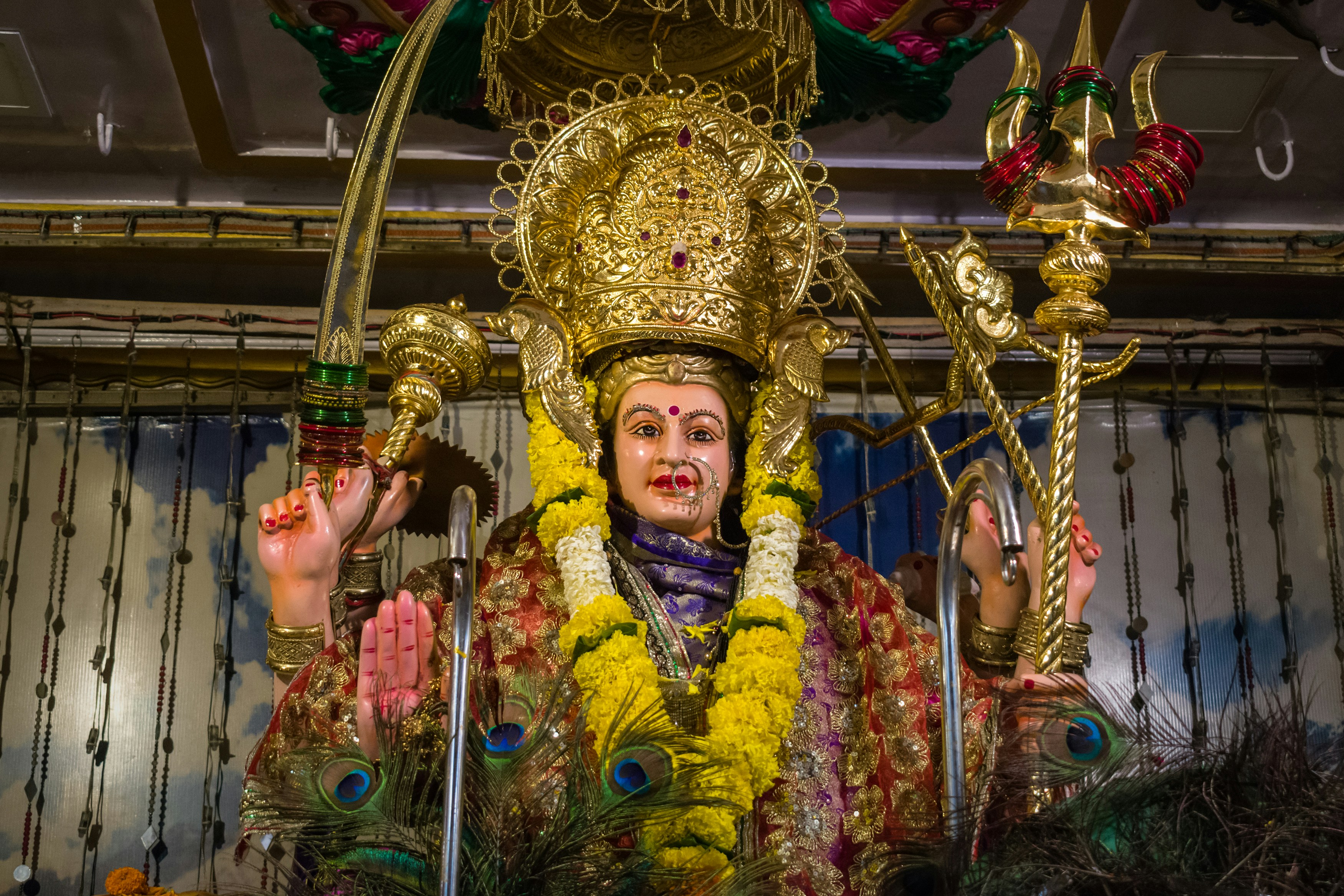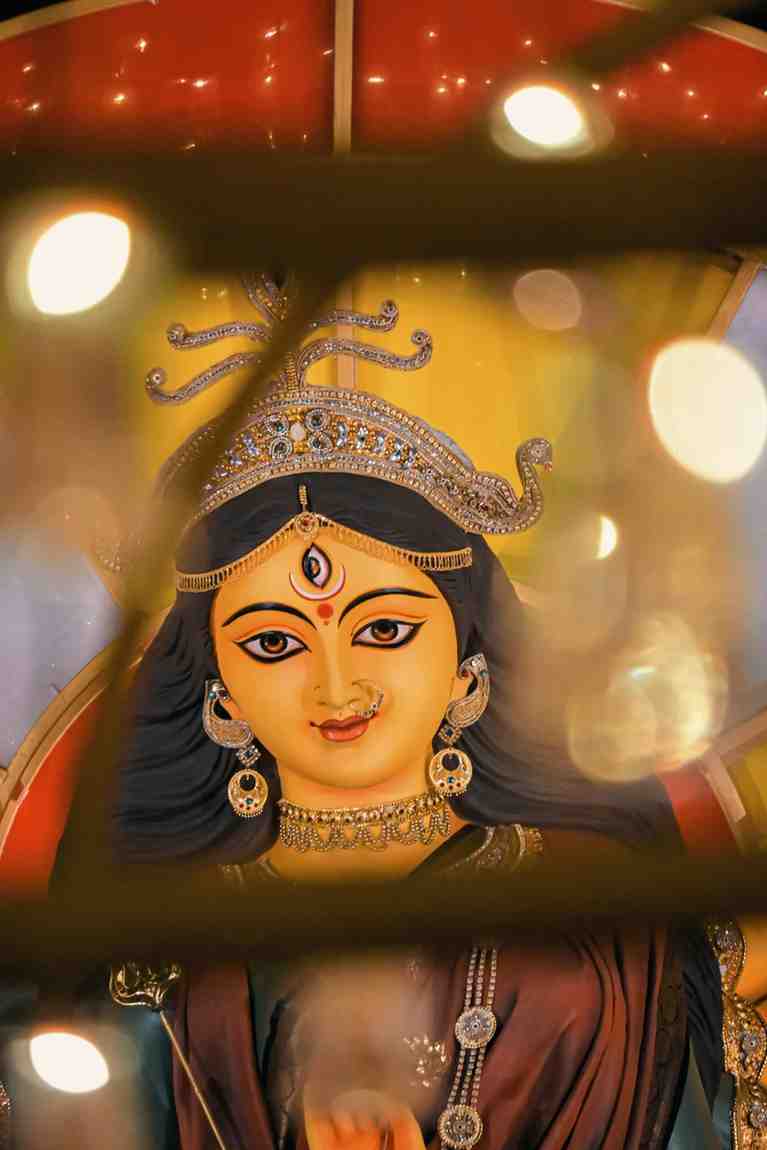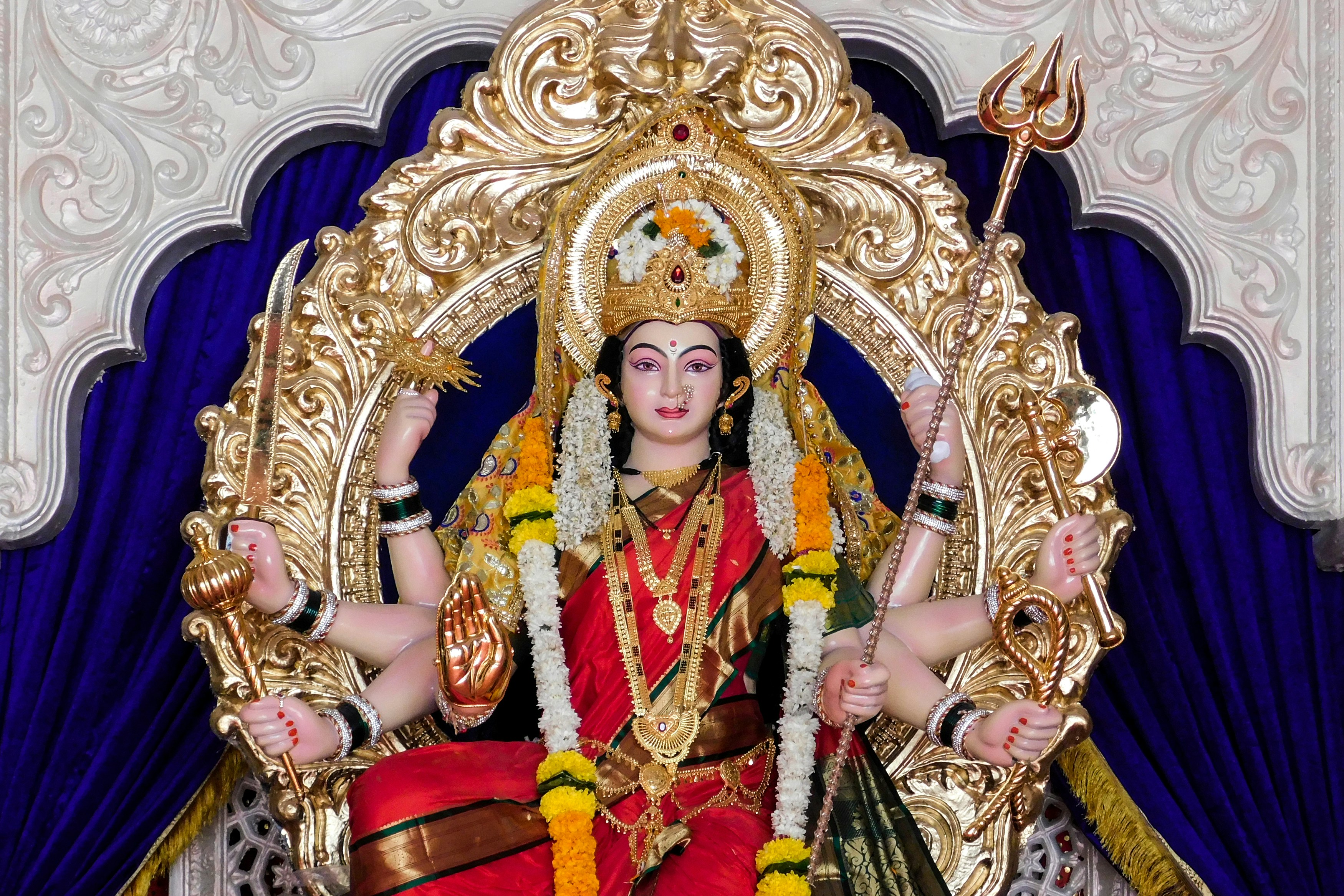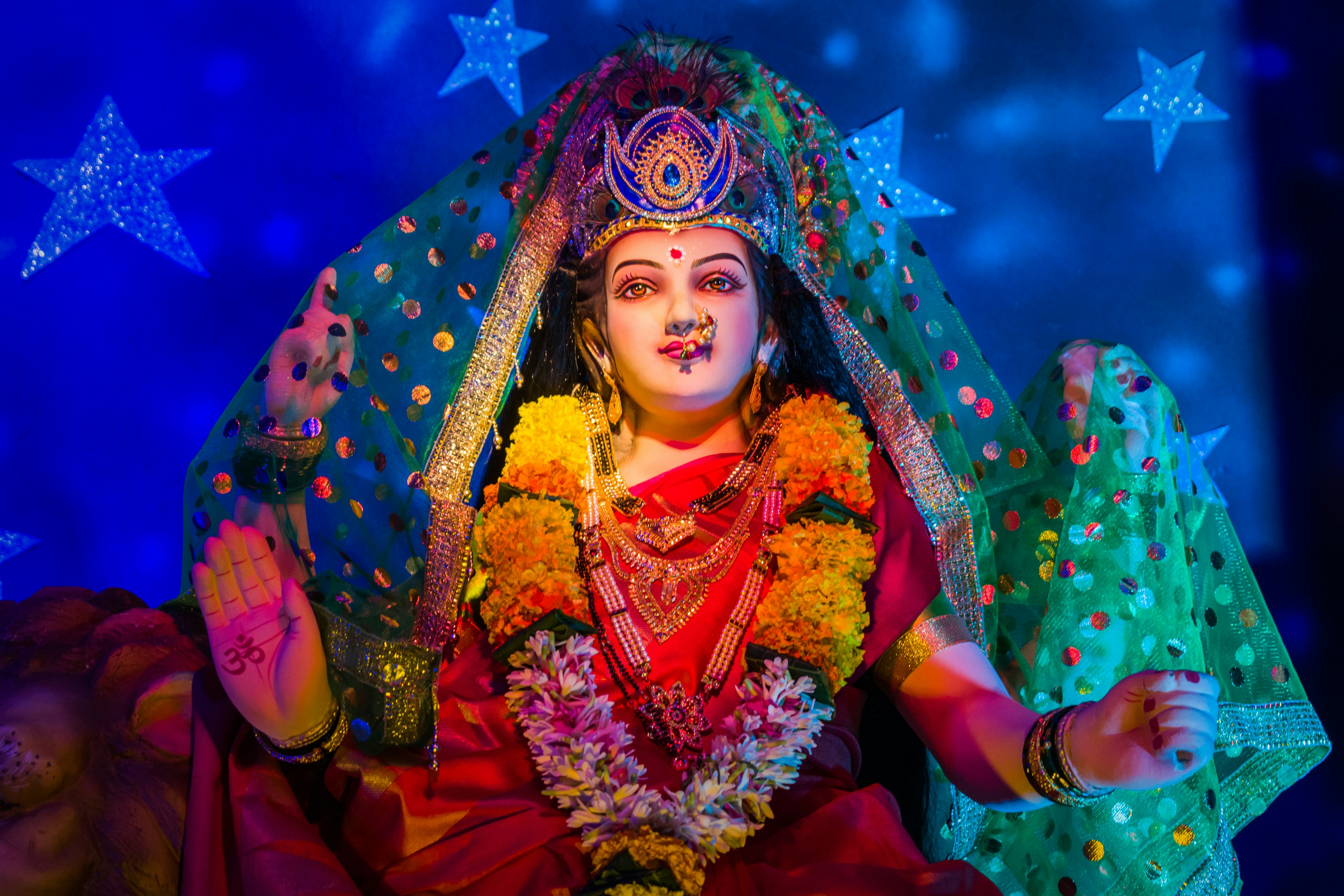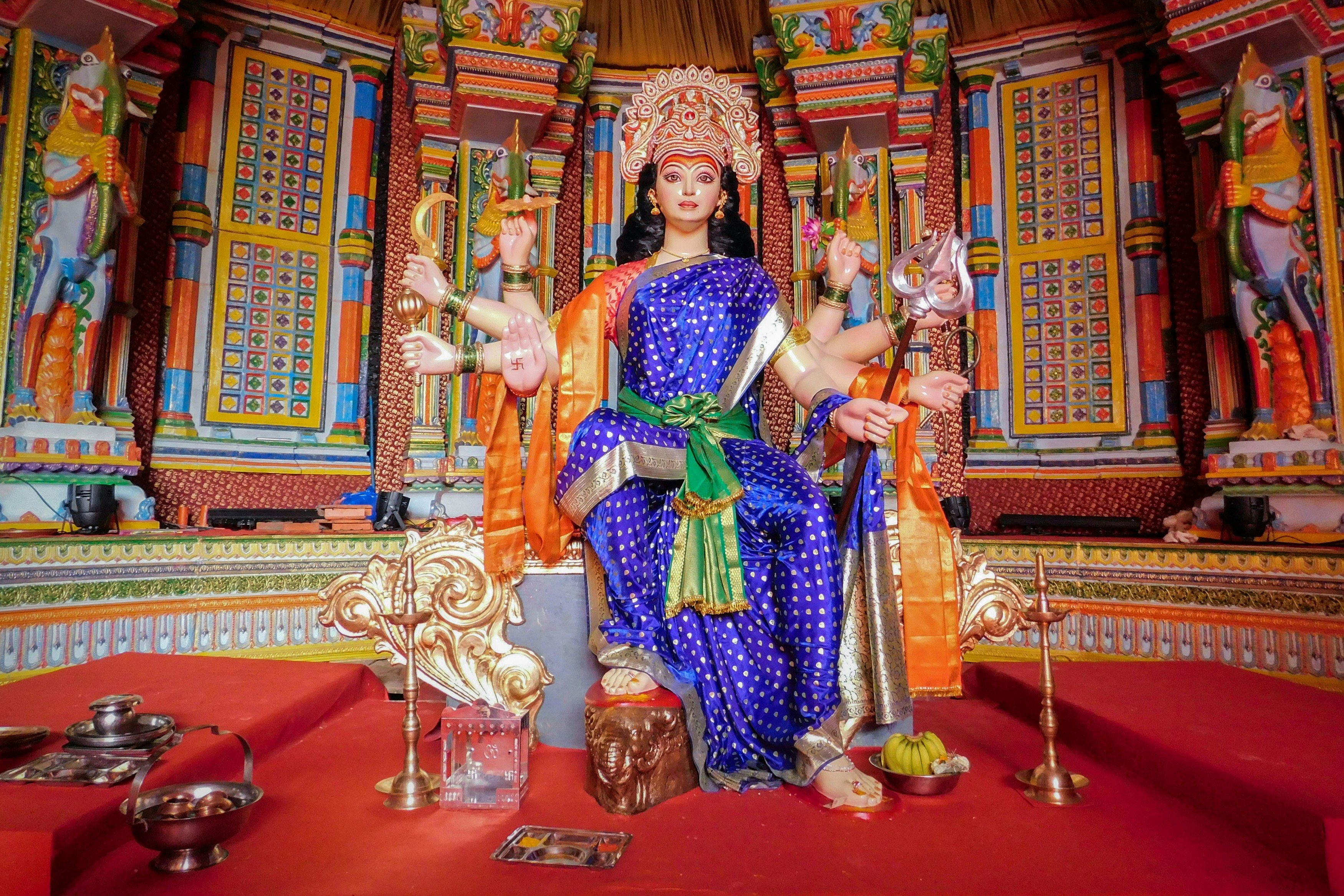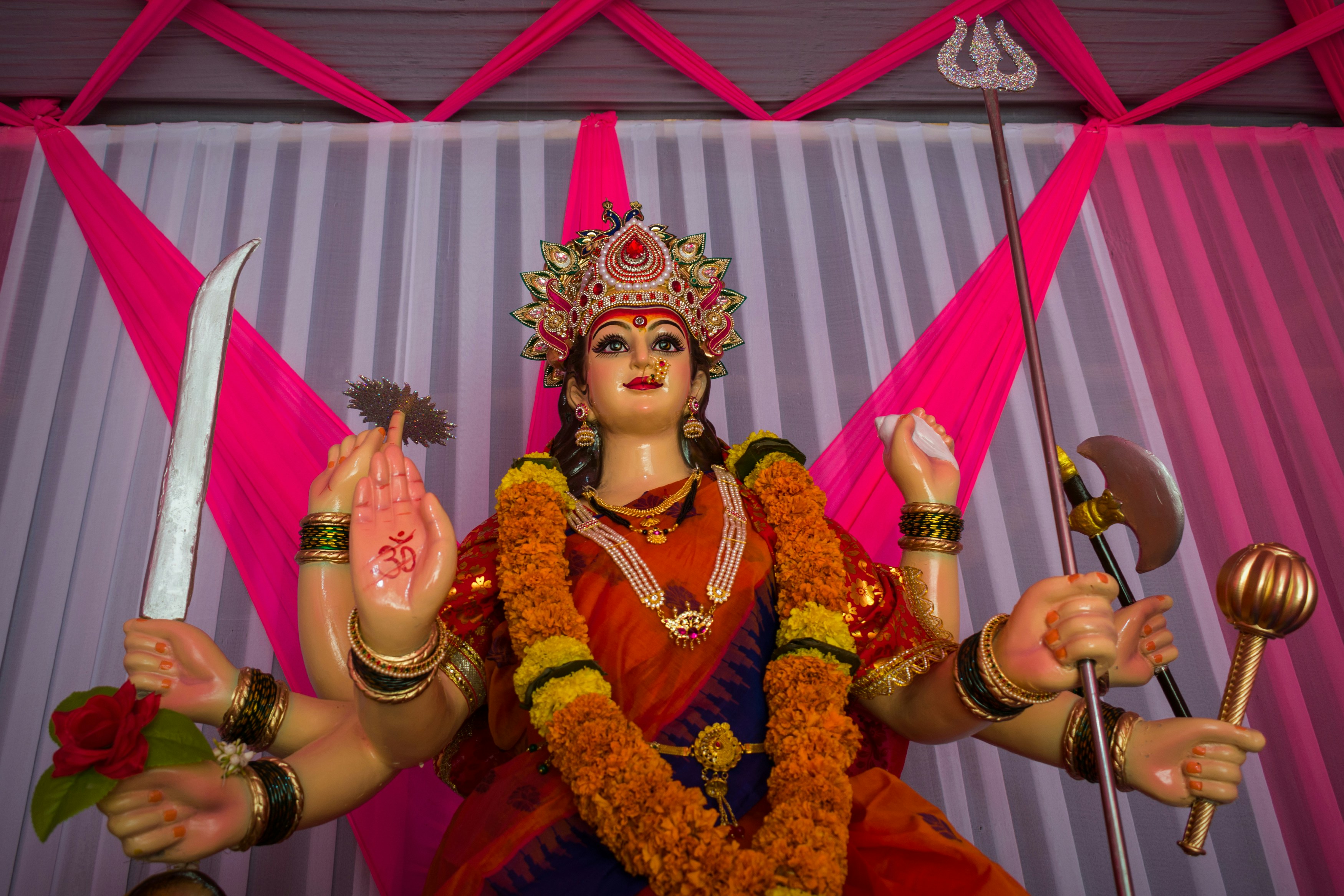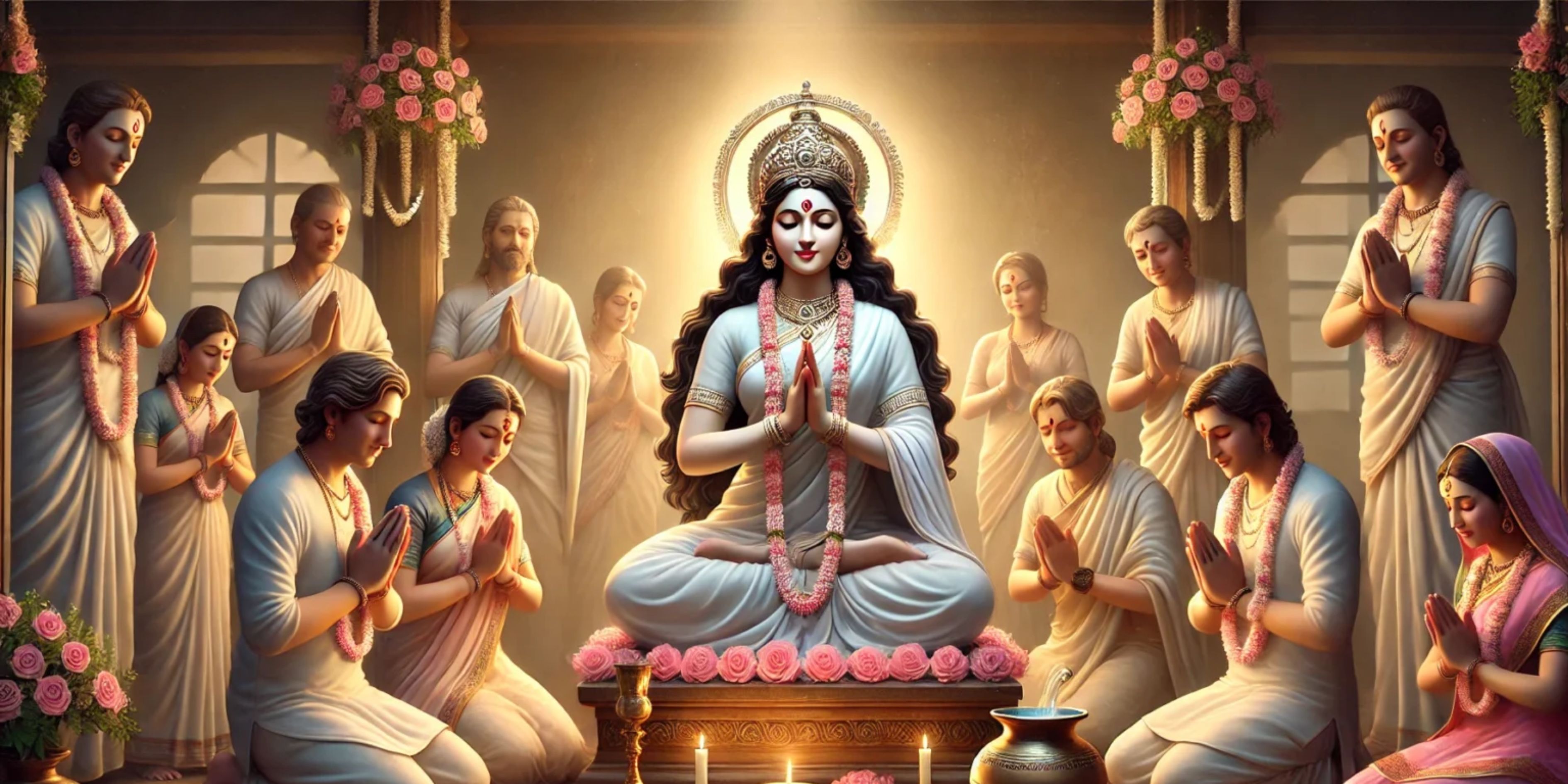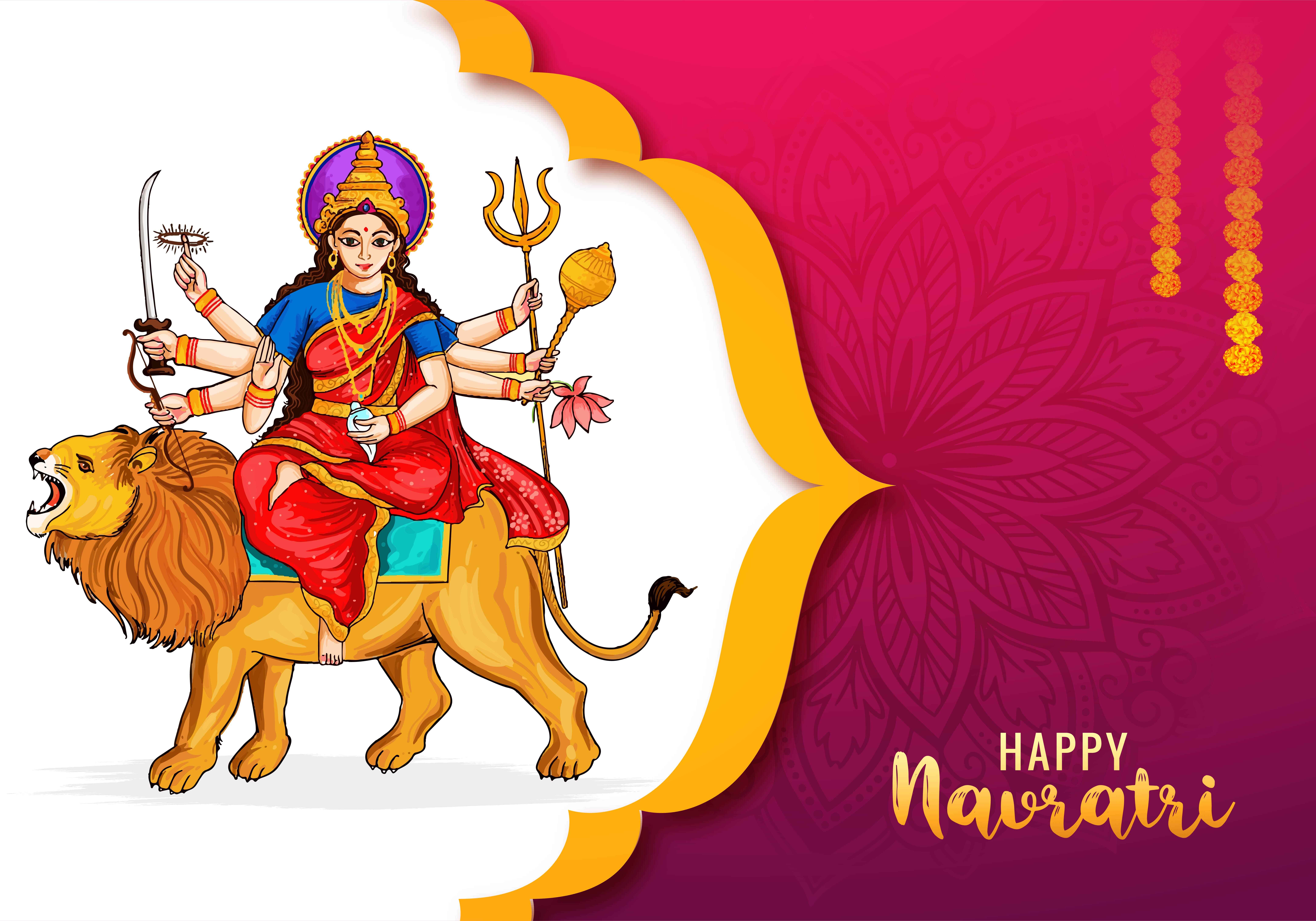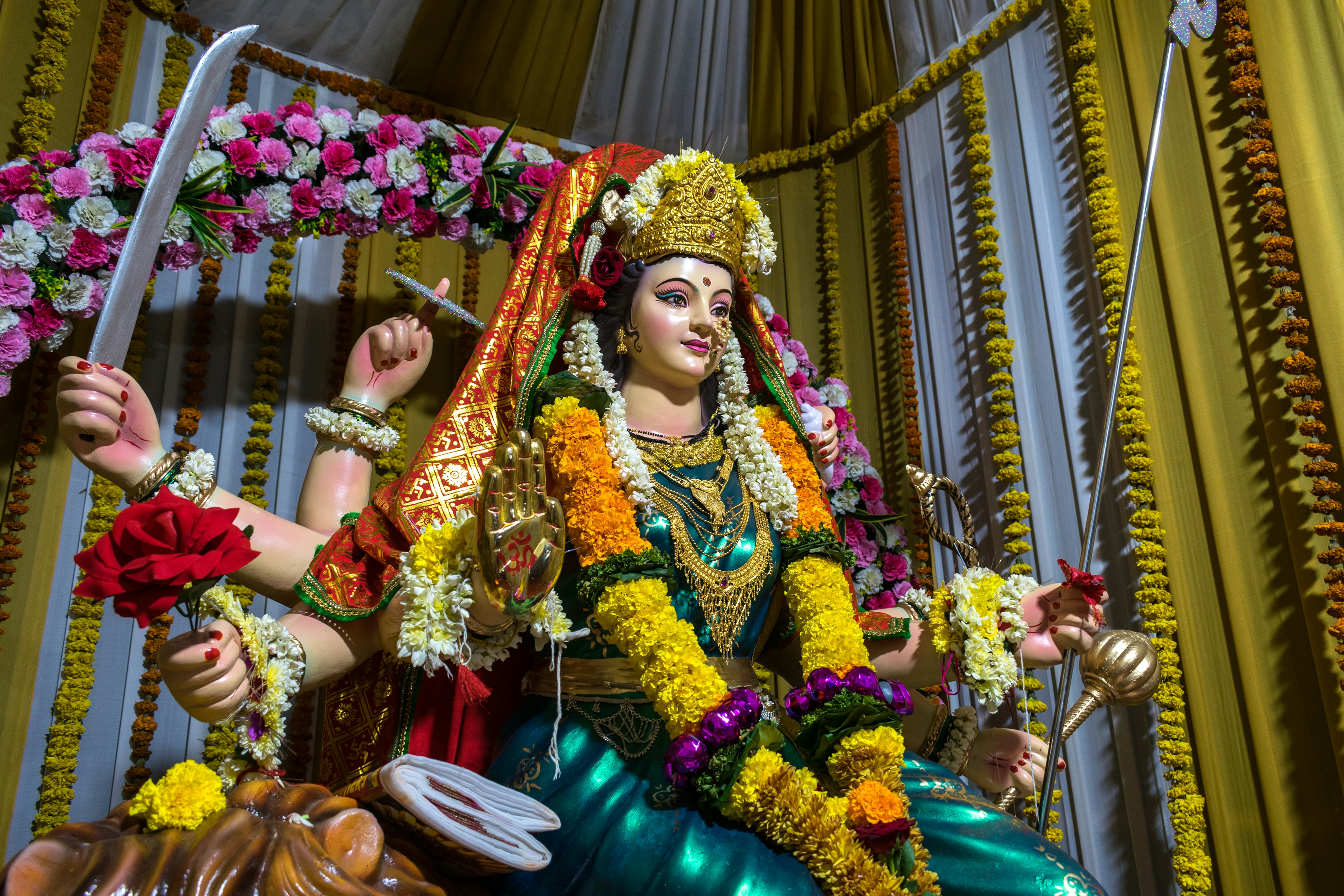Introduction | परिचय
By the fourth morning of Navratri, it seems as if the festival has permeated the very walls. The little sprigs of barley in the Kalash bend in the direction of the diya, an unfluctuating flame which has not been doused since day one. The brass lamp has acquired an imperceptible black ring of smoke, an unobtrusive testimony to three nights of pooja.
In the kitchen, the sizzling of ghee informs you of which day it is. Malpua. Sweet batter dropped into hot oil, edges browning, air thickening with that characteristic smell. Someone waves a newspaper to fan out the stove. Children sit by the counter, already inquiring about how soon the bhog would be prepared.
25 September 2025, Chaturthi (चतुर्थी) day, is dedicated to Maa Kushmanda (माँ कूष्मांडा). It's she who smiled through darkness and lit voids with luminescence. Her devotees call her the source of energy, of wellness, of prosperity.
Who is Maa Kushmanda? | माँ कूष्मांडा कौन हैं?
Her very name tells her story. Ku means small, Ushma means warmth, and Anda means egg. The “little cosmic egg”, the universe itself. It is said that with just her smile, she created the first spark of life, the sun’s glow, the beginning of everything.
You find her in temples and calendars, seated on a lion. Eight arms, each grasping something different: a bow, an arrow, a chakra, a gada, a lotus, a kamandalu, a rosary, and an urn filled with nectar. One hand in blessing. Powerful in image, but those eyes, ever calm.
Elders often explain it simply to children: “वो ही हैं जिन्होंने सबको जीवन दिया।” She is creation itself, the warmth that sustains life, the energy behind the universe.
Muhurat and Puja Timings | मुहूर्त और पूजा का समय
Day 4 puja happens in the morning, when the air still feels fresh. By sunrise, homes are already bustling, floors clean, altars decorated, and flowers strung into garlands.
- Chaturthi Tithi (चतुर्थी तिथि): 25 September 2025
- Morning Muhurat: Up to Mid-morning
- Abhijit Muhurat (अभिजीत मुहूर्त): 11:51 AM to 12:39 PM
As one blows a conch, it reverberates across rooms. The little ones cover their ears and snicker, but keep their hands folded. The elderly people clench their eyes, set in devotion, as their spectacles mirror the diya flame.
Colour of the Day | दिन का रंग
The colour for the fourth day is green (हरा).
Green is refreshing. The hue of new leaves after it has rained, of equilibrium, of silent growth. The sarees that drape upon women, men who sport kurtas and embroidery in green, and little ones who run around in green bangles or ribbons. The altar itself can be clothed in a green cloth, with tulsi leaves keeping company beside the idol itself.
It alters the mood. Where the hot colors of the previous days set a fiery mood, green calms down, providing a peaceful, fruitful energy to the day.
Puja Vidhi and Samagri | पूजा विधि और सामग्री
Normal life continues on a daily basis, but not especially distinctive today.
- Puja Samagri (पूजा सामग्री)
- Mother Kushmanda's idol or picture
- Green cloth or flowers
- Fruits and malpua (traditional bhog
- Sandalwood paste (चंदन), incense (अगरबत्ती), diya (दीपक)
- Kalash with growing barley
Puja Vidhi (पूजा विधि)
Water splashes over the altar, then decoration follows. The idol sits in the centre, diya lit, incense smoke curling out of it. Bhog is placed, and the malpua is smartly placed in a steel plate, sometimes still warm from having been on the pan. The little ones crowd forward, intrigued. Someone always warns, "पहले माँ को भोग लगने दो।" They repeat her mantra, the bell rings out, palms clap out in time. The voice builds and declines, rough and strong. It sounds less like formalities, more like reverence permeating the space.
Prayer and Mantra | प्रार्थना और मंत
मंत्र (Mantra):
ॐ देवी कूष्माण्डायै नमः ॥
Om Devi Kushmandayai Nama
स्तोत्र (Stotra):
सुरासम्पूर्णकलशं रुधिराप्लुतमेव च।
दधाना हस्तपद्माभ्यां कूष्माण्डा शुभदास्तु मे॥
The words echo with the bell. Some voices are strong, others faint, some off-key; yet, together, they carry weight. For a few moments, the chant feels like a shield around the home.
Significance of Worship | पूजा का महत्व
Mother Kushmanda is worshipped as one who crafted the universe out of her smile. Her blessings have been said to impart:
- Vitality (ऊर्जा) and health
- Prosperity (समृद्धि) and plenitude.
- Peace of mind (शांति
- Defense against negativity
She is remembered as prana shakti, the life force that sustains all life. As the solar energies preserve the earth in existence, she keeps hearts strong and stable through grace.
Story of Maa Kushmanda | माँ कूष्मांडा की कथा
In the absence of all entities, light, sound, and motion, only darkness persisted. It is said that Maa Kushmanda exuded a smile, out of which there was birth to the Anda, or cosmic egg. This cosmic egg was to be the source out of which creation evolved, including the sun, stars, and other worlds.
The narrative unfolds within households during the evening ritual of aarti. Elder family members gesture towards the diya, instructing the children, “देखो, ये ज्योति माँ की मुस्कान है।” The children then observe the flame, gently dancing in the wind, convinced that the very essence of light emanated from her smile.
Cultural Reflections | सांस्कृतिक महत्व
Day 4 has a flavor of its own. In the kitchen, malpua s sputter in giant skillets, neighbors come over for prasad, and someone inevitably says it's never round for the first malpua. The aroma of cardamom and ghee persists long after the plate has been cleared.
In Gujarat, Garba grounds shine with green outfits swirling under the lights. In Bengal, pandals throb with drums, dhak echoing down the streets. In villages, temple bells ring at dusk, and people walk barefoot to offer coconuts, the sound of their steps mixing with chants in the cool night air.
Prayer doesn't define Navratri; it's also sound, taste, aroma, and memory. Children closing their ears at the conch's blow. Seniors stringing new flowers into garlands. Neighbors exchanging food and tales. Day 4 becomes part of that chain, bringing the joy of creation to the festival's core.
Conclusion | निष्कर्ष
This fourth day of Navratri is devoted to Maa Kushmanda, one who, through her bright smile, removed gloom and helped in bringing this universe into existence. She is also worshipped as one who grants life, prosperity, and affluence.
Wearing green, offering bhog, reciting her mantras, and narrating her story are ways in which family members bring home her blessings.
As evening draws in and the diya projects dappled shadows upon the wall, devotees recall her truth, that one small spark can bring to light an entire world. Jay Mahu Kushmanda

